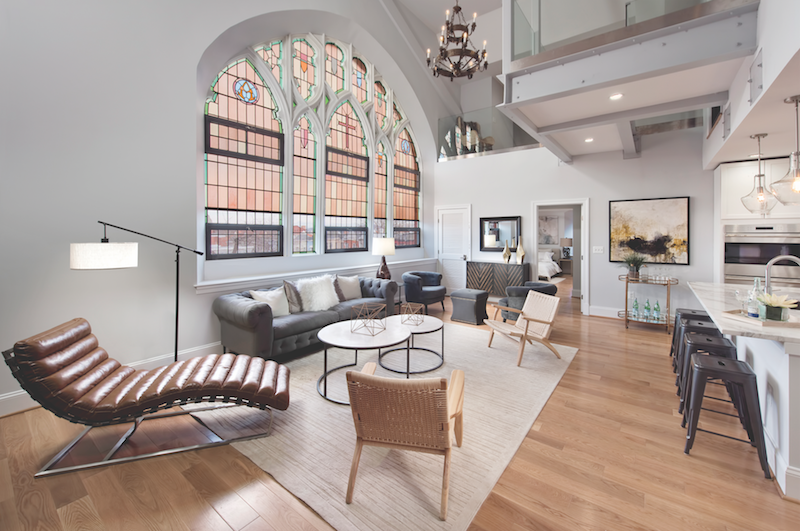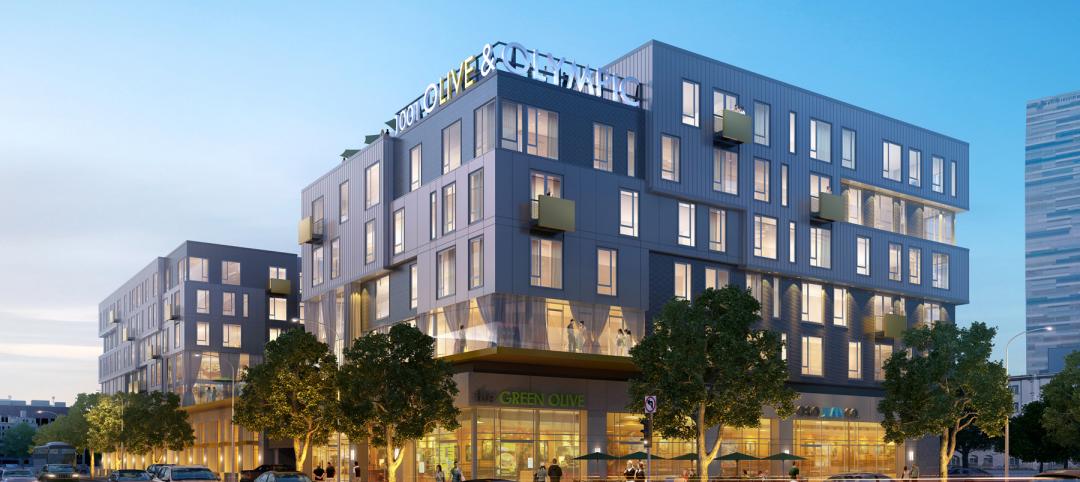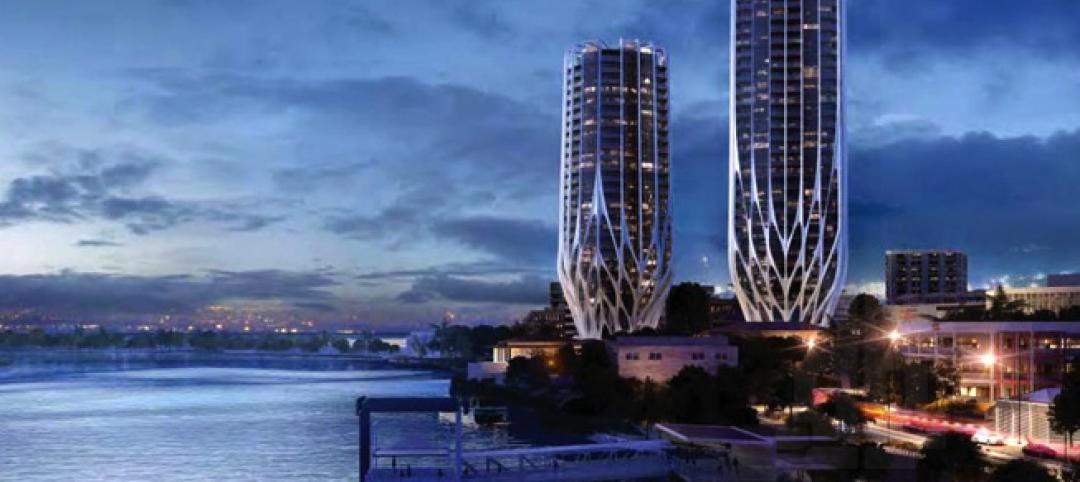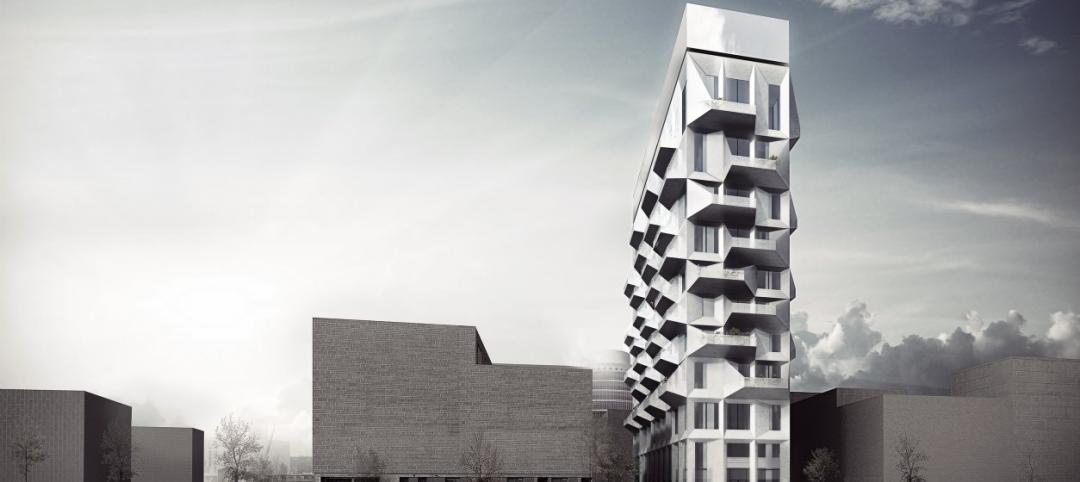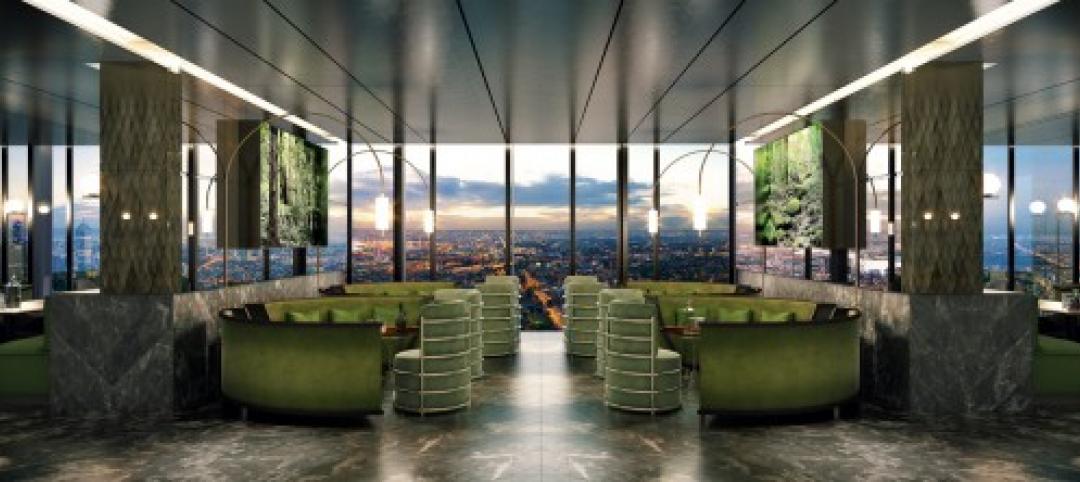One of the curious things about the Nation’s Capital is that, unlike many older U. S. cities, Washington, D. C., never had any industry to speak of—unless you count the manufacture of hot air as an industry. In the District of Columbia, you don’t see those wonderful 19th-century Italianate factories that dot the cityscapes of Boston, New York, Baltimore, Chicago—strong-boned, high-ceilinged brick edifices that convert into magnificent loft apartments, condominiums, and mixed-use centers.
What Washington does have aplenty is churches and other “religious locations” —by one count, 857, or one for every 758 residents. Until recently, the Way of the Cross Church, a Gothic Revival structure that dates to 1898, was among them. Today, it is the Sanctuary, a handsome 30-unit condominium complex at 819 D St., NE.
The Sanctuary may represent the vanguard of a new trend in Washington: the conversion of some of the city’s older churches—many of them located in emerging or already desirable neighborhoods—to sorely needed residential use.
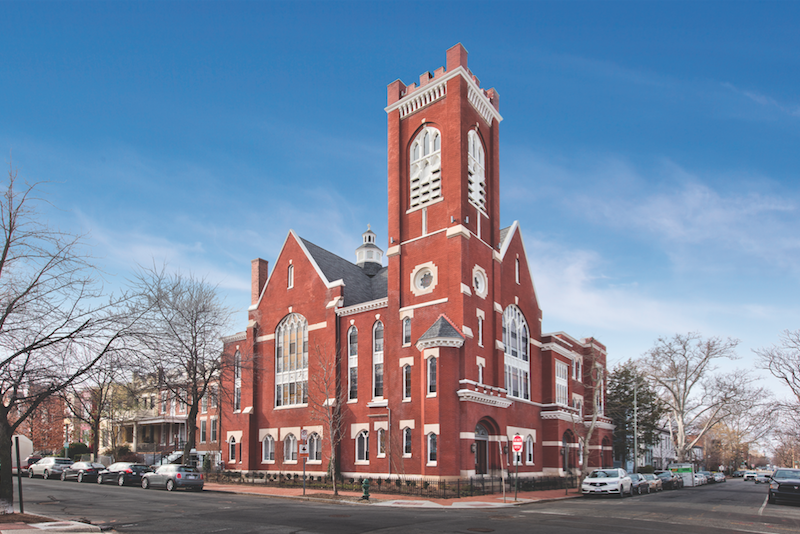 Exterior of the Sanctuary, at 816 D St., NE, Washington, D. C. The original Ninth Street Congregational Church dates from 1898. A three-story classroom annex built in 1916 now includes townhouses.
Exterior of the Sanctuary, at 816 D St., NE, Washington, D. C. The original Ninth Street Congregational Church dates from 1898. A three-story classroom annex built in 1916 now includes townhouses.
The church and its adjacent annex came on the market in 2014. The congregation had been migrating to the Maryland suburbs, and the sale of the church helped them finance construction of a larger building in Capitol Heights, Md. After some ownership changes, the quarter-acre property came under control of The Rubin Group, in partnership with real estate finance firm Regua. Andrew T. Rubin, Principal in the family-owned firm, brought in Bill Bonstra, FAIA, LEED AP, Founder of Washington design firm Bonstra | Haresign Architects, to lead the project.
In the course of the next two years, Rubin and Bonstra would learn more than they ever wanted to know about stained glass.
GETTING ALL THE NECESSARY APPROVALS
The first item on Rubin and Bonstra’s checklist was to obtain special zoning relief to change the building’s use to residential. Parking was the neighbors’ number one hot button. For years, local residents had been inconvenienced by church members taking up street parking on Sundays and weeknights. After meeting numerous times with the local Advisory Neighborhood Commission and other civic groups, Rubin and Bonstra were able to convince the locals that the parking problem would mostly go away once the church was shifted to residential use—especially with local bus, train, and new H Street trolley service in the neighborhood.
The more vexing problem had to do with the historic nature of the neighborhood. Although the church was not a designated landmark, because it was in the Capitol Hill Historic District and of a certain age, it was deemed a “’contributing building” under the District’s historic preservation guidelines. “Those buildings are what give the district its historical character,” says Gretchen Pfaehler, AIA, a member of the District’s Historic Preservation Review Board (HPRB).
Pfaehler, an Associate Partner at design firm Beyer Blinder Belle, was Chair of the HPRB at the time the Sanctuary came under its purview. She was particularly concerned about the stained glass windows, a subject in which she is an acknowledged authority. Under the code, she says, the windows were considered “artistic elements” that contributed “important character and effect” to the church.
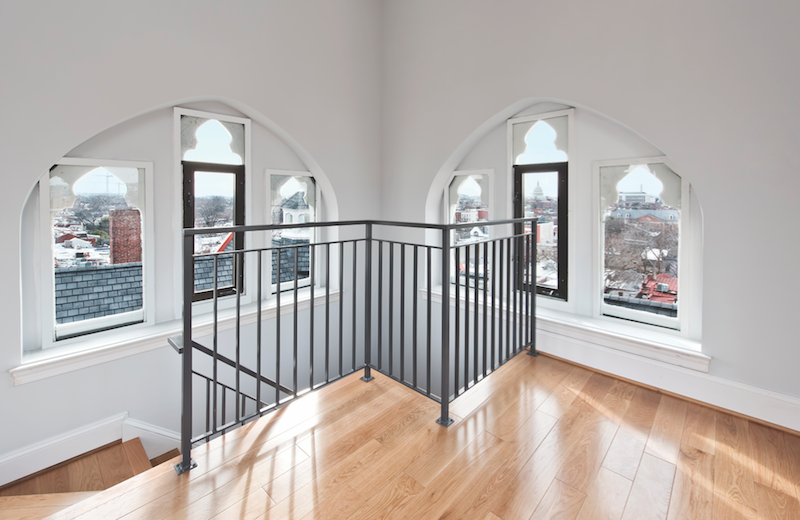 The view from the bell tower (which never had bells)—“now the highest privately owned view in D. C.,” according to developer Andrew T. Rubin.
The view from the bell tower (which never had bells)—“now the highest privately owned view in D. C.,” according to developer Andrew T. Rubin.
That position clashed with Bonstra and Rubin’s desire to make the building more appealing to prospective buyers by replacing translucent lites at eye level with transparent ones in some windows. “Stained glass might be good for spirituality,” Bonstra says, “but when you live in a building, you want to be able to look out the windows.”
The Review Board had denied two previous requests from developers who wanted to replace ornamental glass with clear glass; both decisions were upheld on appeal to the next higher authority. But they gave the Sanctuary team a chance to make the case for switching out the glass.
After conducting an extensive search, Bonstra and Rubin identified the glass restoration expert they believed could help them—Cumberland Stained Glass, Mechanicsburg, Pa. The 25-year-old studio is accredited by the Stained Glass Association of America.
The design team organized a site visit with Pfaehler and representatives from the D. C. Historic Preservation Office, the Capitol Hill Restoration Society, and the Advisory Neighborhood Commission. Cumberland’s President, Bryan Lerew, demonstrated a mocked-up window that illustrated how the lead matrix and ornamental design could be preserved, even if some lites were replaced with specialty transparent glass.
It was a textbook case of the effectiveness of physical mockups in building design. “The mockup did influence us,” says Pfaehler. “It allowed us to see the actual glazing in the appropriate lighting.” Lerew had specified a German-made glass (“Restover”) with a kind of distressed exterior side for the clear lites. The mockup helped overcome Pfaehler’s concerns about the sheen and reflectance of the clear glass as viewed from the street; at the same time, the glass provided the see-through visibility Bonstra and Rubin were looking for.
But the Review Board was not done. “We examined each window in detail to determine how much glass could be replaced without compromising the overall artistry of the window,” says Pfaehler. When Bonstra asked permission to punch holes in a street-facing wall for new windows, the board issued a categorical no. But they did allow new windows on the rear of the church and some operable windows for ventilation.
Following months of negotiation, the Review Board approved the revisions to the windows, although Pfaehler was emphatic that the decision applied only to the Sanctuary and was not to viewed as precedent setting.
Refurbishing the 132 windows took six of Cumberland’s technicians nine months, Lerew says. “The windows were badly out of repair, and the lead had outlived its life,” he says. Cumberland craftsmen painstakingly preserved 75% of the original glass and restored all the original designs. The total cost of the glasswork, according to Rubin: about 10% of the total $15.1 million construction cost.
SHORING UP THE STRUCTURE
The 85-foot-tall bell tower needed major structural reinforcement. “We removed about four feet of the original wall all the way to the basement, then poured a 28-by-42-inch concrete column and laid engineered structural beams,” says Brian Lucey, Potomac Construction Group’s Vice President of Operations.
Inserting the shaft for the new three-story KONE elevator between the church and the old classroom annex proved vexing for Potomac and structural engineer Structura. Concrete in the annex had to be demolished, underpinning placed around the foundations, and new footings laid. “We had to shore up each concrete floor as we moved up, putting in new cinder block shaft walls to the roof,” says Lucey.
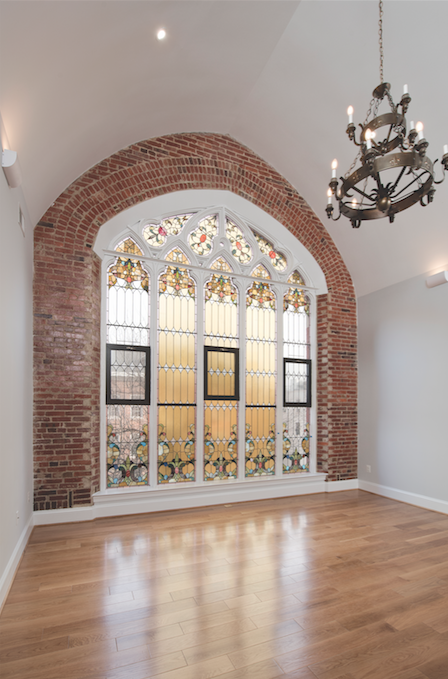 Potomac Construction Group crews carefully preserved light fixtures and original brick throughout the nearly 35,000-sf restoration. Note the special German-made transparent glass and the operable windows, two features the developer and design team worked hard to convince the District of Columbia Historic Preservation Review Board to approve.
Potomac Construction Group crews carefully preserved light fixtures and original brick throughout the nearly 35,000-sf restoration. Note the special German-made transparent glass and the operable windows, two features the developer and design team worked hard to convince the District of Columbia Historic Preservation Review Board to approve.
“The window lines throughout the building varied due to the differences in structure and purpose of the church and annex,” says Colin Drumright, Project Architect, Bonstra | Haresign. “We incorporated these differences into the living units by having double-height spaces and varied floor elevations on the third floor.” Sloped seating in the choir loft was demolished to gain the proper alignment, he notes.
Potomac finished the 34,693-sf job last New Year’s Eve. By September, the 29 one- and two-bedroom units (440 to 1,900 sf) were sold out. The penthouse (two bedrooms/2.5 baths) went for $1,525,000, a condo sales figure the city’s Northeast quadrant had not seen since 2008.
The Sanctuary received an Award of Excellence in Historic Architecture from AIA Northern Virginia. Next month, it will be announced as a winner in Building Design+Construction’s Reconstruction Awards.
The conversion of the church had an almost Damascene effect on the participants. “We felt more like stewards of the building than developers,” says Rubin. “The church started telling us what to do.”
PROJECT TEAM | THE SANCTUARY
CLIENT The Rubin Group, in partnership with Regua ARCHITECT Bonstra | Haresign Architects STRUCTURAL ENGINEER Structura CIVIL ENGINEER VIKA Capitol MECHANICAL ENGINEER Capitol Engineering Group GLASS CONSULTANT Cumberland Stained Glass GC Potomac Construction Group
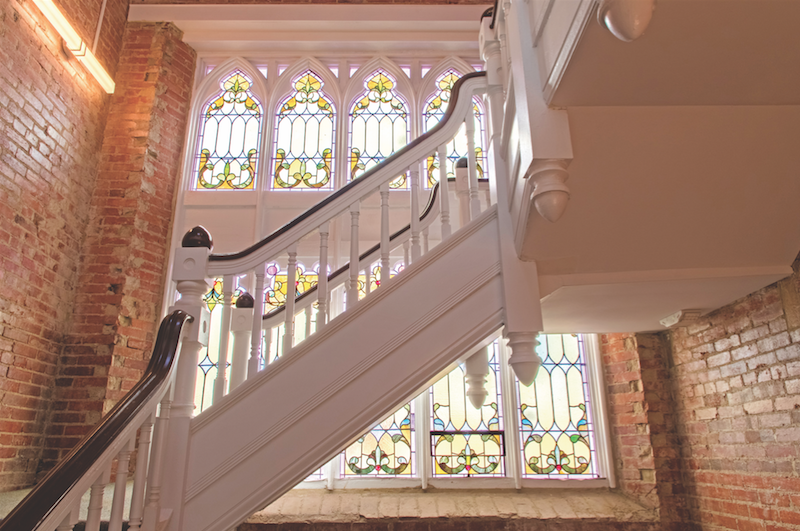 Plaster was removed from the walls in the main stairwell (and elsewhere) to reveal the original brick. The wooden balustrade was restored.
Plaster was removed from the walls in the main stairwell (and elsewhere) to reveal the original brick. The wooden balustrade was restored.
Related Stories
| Sep 15, 2014
Ranked: Top international AEC firms [2014 Giants 300 Report]
Parsons Brinckerhoff, Gensler, and Jacobs top BD+C's rankings of U.S.-based design and construction firms with the most revenue from international projects, as reported in the 2014 Giants 300 Report.
| Sep 15, 2014
Gen-Y-focused multifamily development under way in L.A.
The new urban residential community at 1001 S. Olive Street will offer open floor plans consisting of 64 studios, 109 one bedroom units, and 28 two-bedroom units, ranging in size from approximately 500 sq ft to 1,100 sq ft.
| Sep 9, 2014
Using Facebook to transform workplace design
As part of our ongoing studies of how building design influences human behavior in today’s social media-driven world, HOK’s workplace strategists had an idea: Leverage the power of social media to collect data about how people feel about their workplaces and the type of spaces they need to succeed.
| Sep 7, 2014
Behind the scenes of integrated project delivery — successful tools and applications
The underlying variables and tools used to manage collaboration between teams is ultimately the driving for success with IPD, writes CBRE Healthcare's Megan Donham.
| Sep 5, 2014
First Look: Zaha Hadid's Grace on Coronation towers in Australia
Zaha Hadid's latest project in Australia is a complex of three, tapered residential high-rises that have expansive grounds to provide the surrounding community unobstructed views and access to the town's waterfront.
| Sep 3, 2014
Ranked: Top local government sector AEC firms [2014 Giants 300 Report]
STV, HOK, and Turner top BD+C's rankings of the nation's largest local government design and construction firms, as reported in the 2014 Giants 300 Report.
| Sep 3, 2014
New designation launched to streamline LEED review process
The LEED Proven Provider designation is designed to minimize the need for additional work during the project review process.
| Sep 2, 2014
Ranked: Top green building sector AEC firms [2014 Giants 300 Report]
AECOM, Gensler, and Turner top BD+C's rankings of the nation's largest green design and construction firms.
| Sep 2, 2014
Extreme conversion: 17-story industrial silo to be converted to high-rise housing
As part of Copenhagen's effort to turn an industrial seaport into a bustling neighborhood, Danish architecture firm COBE was invited to convert a grain silo into a residential tower.
| Sep 2, 2014
Melbourne's tallest residential tower will have 'optically transformative façade'
Plans for Melbourne's tallest residential tower have been released by Elenberg Fraser Architects. Using an optically transformative façade and botanical aesthetic, the project seeks to change the landscape of Australia's Victoria state.


